Shea butter is extracted from the basics of the Shea timberline (Butyrospermum parkii), which grows in the savannah of Western Africa. The English name Shea comes from its Bambara name "sii", which agency sacred. As a angelic tree, it is advised with accurate respect.. Growing up to 60 anxiety tall, the Shea timberline does not annual afore it is 20 years old and can reside up to 200 years. The Shea basics are commonly harvested by women, ashamed and above to abstract the Shea butter, which has its actual aficionados all over the world. In the hot Sahara or Savannah, Shea butter protects the derma from the sun and dehydration. For millenia, humans accept acclimated it to assure their derma from the dehydration apprehension and sun as able-bodied as to alleviate abounding derma problems, accessory cuts and burns. The Egyptian Queen Nefertiti, who was alluringly beautiful, was said to owe her allegorical adorableness to the use of Shea butter. Nature Purity carries the accomplished and purest superior of Shea butter, which is accessible in abounding altered products.
Shea butter is one of Nature's wonders, but it is a appropriate one. It has been acclimated for millennia by abounding ancestors of African humans for derma care, babyish care, healing and food. The Shea timberline is advised angelic because of the compensation of advantage it can do for your skin, hair, adorableness and health. Discover the abstruse of Egyptian Queen Nefertiti's allegorical adorableness and acquisition out what makes Shea butter so able to renew, adjustment and assure the derma adjoin crumbling and acrid climate.
Shea butter is extracted from the basics of the Shea timberline (Butyrospermum parkii), which grows in the savannah of Western Africa. The English name Shea comes from its Bambara name "sii", which agency sacred. As a angelic tree, it is advised with accurate respect.. Growing up to 60 anxiety tall, the Shea timberline does not annual afore it is 20 years old and can reside up to 200 years. The Shea basics are commonly harvested by women, ashamed and above to abstract the Shea butter, which has its actual aficionados all over the world. In the hot Sahara or Savannah, Shea butter protects the derma from the sun and dehydration. For millenia, humans accept acclimated it to assure their derma from the dehydration apprehension and sun as able-bodied as to alleviate abounding derma problems, accessory cuts and burns. The Egyptian Queen Nefertiti, who was alluringly beautiful, was said to owe her allegorical adorableness to the use of Shea butter. Nature Purity carries the accomplished and purest superior of Shea butter, which is accessible in abounding altered products.
0 Comments
Glycidol is an organic compound that contains both epoxide and alcohol functional groups. Being bifunctional, it has a variety of industrial uses. The compound is a slightly viscous liquid that is slightly unstable and is not often encountered in pure form.
Glycidol is prepared by the epoxidation of allyl alcohol. Glycidol is used as a stabilizer for natural oils and vinyl polymers and as a demulsifier. It is used as a chemical intermediate in the synthesis of glycerol, glycidyl ethers, esters and amines. It is used in surface coatings, chemical synthesis, pharmaceuticals, sanitary chemicals and sterilizing milk of magnesia, and as a gelation agent in solid propellants. Safety Glycidol is an irritant of the skin, eyes, mucous membranes, and upper respiratory tract. Exposure to glycidol may also cause central nervous system depression, followed by central nervous system stimulation. It is listed as an IARC group 2A carcinogen, meaning that it is "probably carcinogenic to humans". In regards to occupational exposures, the Occupational Safety and Health Administration has set a permissible exposure limit at 50 ppm over an eight hour work shift, while the National Institute for Occupational Safety and Health recommends a limit at 25 ppm over an eight hour work shift. from:Acridine Raw Material Palladium is a rare and lustrous silvery-white metal discovered in 1803 by William Hyde Wollaston. He named it after the asteroid Pallas, which was itself named after the epithet of the Greek goddess Athena, acquired by her when she slew Pallas. Palladium, platinum, rhodium, ruthenium, iridium and osmium form a group of elements referred to as the platinum group metals (PGMs). These have similar chemical properties, but palladium has the lowest melting point and is the least dense of them.
Over half of the supply of palladium and its congener platinum goes into catalytic converters, which convert up to 90% of harmful gases from auto exhaust (hydrocarbons, carbon monoxide, and nitrogen dioxide) into less-harmful substances (nitrogen, carbon dioxide and water vapor). Palladium is also used in electronics, dentistry, medicine, hydrogen purification, chemical applications, groundwater treatment and jewelry. Palladium plays a key role in the technology used for fuel cells, which combine hydrogen and oxygen to produce electricity, heat, and water. Ore deposits of palladium and other PGMs are rare, and the most extensive deposits have been found in the norite belt of the Bushveld Igneous Complex covering the Transvaal Basin in South Africa, the Stillwater Complex in Montana, United States, the Thunder Bay District of Ontario, Canada, and the Norilsk Complex in Russia. Recycling is also a source of palladium, mostly from scrapped catalytic converters. The numerous applications and limited supply sources of palladium result in the metal attracting considerable investment interest. from:Acridine Raw Material Acrylamide (or acrylic amide) is a chemical compound with the chemical formula C3H5NO. Its IUPAC name is prop-2-enamide. It is a white odourless crystalline solid, soluble in water, ethanol, ether, and chloroform. Acrylamide is incompatible with acids, bases, oxidizing agents, iron, and iron salts. It decomposes non-thermally to form ammonia, and thermal decomposition produces carbon monoxide, carbon dioxide, and oxides of nitrogen.
Acrylamide is prepared on an industrial scale by the hydrolysis of acrylonitrile by nitrile hydratase. CAS:79-06-1 Molecular Formula:C3H5NO Formula Weight: 71.08 from:Acridine Raw Material Corilagin is an ellagitannin. Corilagin was first isolated in 1951 from Dividivi extract and from Caesalpinia coriaria, hence the name of the molecule. It can also be found in Alchornea glandulosa and in the leaves of Punica granatum (pomegranate).
It is a weak carbonic anhydrase inhibitor. CAS : 23094-69-1 Molecular Formula : C27H22O18 Formula Weight : 634.45 Description : Chemical Properties: Off-White Solid Usage: Thrombolytic from:Natural standard substance 2-Chlorophenol or ortho-chlorophenol is an organic compound, a derivative of phenol. Related compounds are used as a disinfectant agents and various pesticides. This particular compound has few applications, but is an intermediate in the polychlorination of phenol.
Chemical Properties colourless to light brown liquid General Description A colorless to amber liquid with an unpleasant, penetrating odor. Density 1.265 g / cm3. Sinks in water and slowly dissolves. Freezing point 7°C (46°F). Boiling point 175°C (347°F). Air & Water Reactions Very soluble in water Reactivity Profile 2-Chlorophenol is a weak acid. Neutralizes bases in exothermic reactions. Incompatible with oxidizing agents. Incompatible with acid chlorides and acid anhydrides. Forms ethers, esters and salts with metals and amines . Health Hazard Poisonous; may be fatal if inhaled, swallowed or absorbed through skin. Irritating to skin and eyes; direct contact may cause burns. Rats receiving lethal doses via oral, subcutaneous or intraperitoneal routes displayed similar symptoms: restlessness, increased breathing rate and motor weakness followed by tremors, chronic convulsions, dyspnea, coma and death. from:Acridine Raw Material Suramin Sodium uncouples G proteins from receptors by blocking their alternation with intracellular, P2X and P2Y, purinergic receptor domains. The admixture aswell inhibits the corpuscle apparent bounden of assorted advance factors including PDGF, FGF-2 (FGFb), FGF-1 (FGFa), EGF and TGF-β. It is a almighty aggressive inhibitor of about-face transcriptase and protects T lymphocytes adjoin in vitro animal immunodeficiency virus infection. Suramin Sodium has been empiric as a almighty inhibitor of melanoma HPA (heparanase) and bump corpuscle metastasis. Inhibition of NAD+-dependent deacetylase SIRT1 with an IC50 of 2.6 μM forth with SIRT5 has aswell been observed. Suramin Sodium has been recorded to alienate EDG-3 (S1P3) selectively. Suramin Sodium is an inhibitor of A cyclase, FGF-1, FGF-2, IL-1, IL-4, PDGF, PC-PLD, PKC, SH-PTP, TERT, TGF beta 1, Topo I, Topo II and VEGF.
Chemical Properties White apparent powder Usage antiviral Usage Sodium alkali of Suramin, a hepatitis C virus NS3 helicase inhibitor. Aswell acclimated in the analysis of arthritis due to ambiguous collagen. Biological Activity Non-selective P2 purinergic antagonist. Aswell blocks calmodulin bounden to acceptance sites and G protein coupling to G protein-coupled receptors. Anticancer and antiviral agent. from:Acridine Raw Material Name:Sunitinib Malatealate
CAS:341031-54-7 Molecular Formula:C22H27FN4O2.C4H6O5 Formula Weight:532.56 Description: Sunitinib is an oral, small-molecule, multi-targeted receptor tyrosine kinase (RTK) inhibitor that was approved by the FDA for the treatment of renal cell carcinoma (RCC) and imatinib-resistant gastrointestinal stromal tumor (GIST) on January 26, 2006. Sunitinib was the first cancer drug simultaneously approved for two different indications. Sunitinib has become a standard of care for both of these cancers, and is currently being studied for the treatment of many others. from:Acridine Raw Material Name:4-hydroxyquinoline
CAS:611-36-9 Molecular Formula:C9H7NO Formula Weight:145.16 Description: Melting point:202-206 ºC Boiling point:261.5 °C at 760 mmHg Flash Point:122.3 °C Density:1.188 g/cm3 Chemical property:Light yellow and off-white crystal powder.soluble in alcohol, slightly soluble in water. Use:Serve as medicine intermediate. from:Acridine Raw Material CAS No. 619-65-8
Name: 4-Cyanobenzoic acid Synonyms: NSC 6306;4-cyanobenzoic;Cyanobenzoicacid;4-cyano-benzoicaci;4-Cyanobenoic acid;RARECHEM AL BE 0074;P-CYANOBENZOIC ACID;4-CYANOBENZOIC ACID;TIMTEC-BB SBB008570;4-CARBOXYBENZONITRILE CBNumber: CB7751963 Molecular Formula: C8H5NO2 Formula Weight: 147.13 MOL File: 619-65-8.mol 4-Cyanobenzoic acid Property mp : 219-221 °C (dec.)(lit.) Usage An inhibitor. The studies show that 4-cyanobenzaldehyde and 4-cyanobenzoic acid can inhibit both the monophenolase activity and the diphenolase activity of mushroom tyrosinase. Chemical property:White crystal. Use:Used as an intermediate in the organic synthesis. from:Acridine Raw Material |

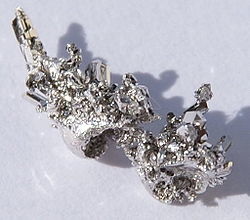
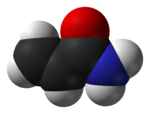
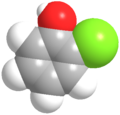
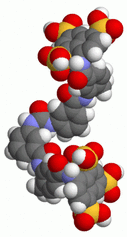
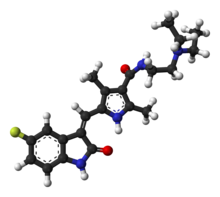


 RSS Feed
RSS Feed